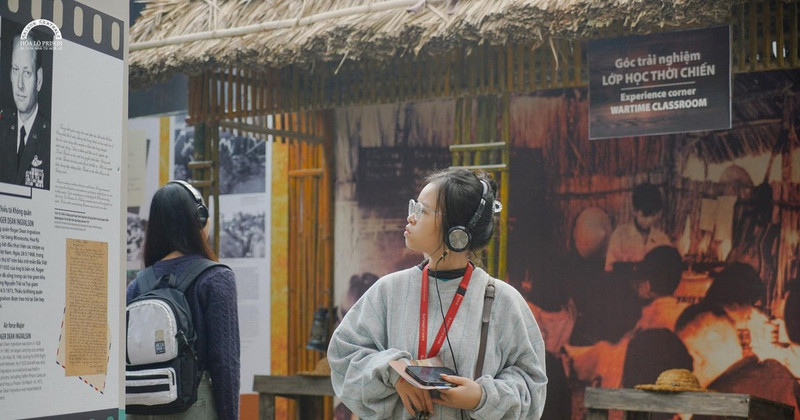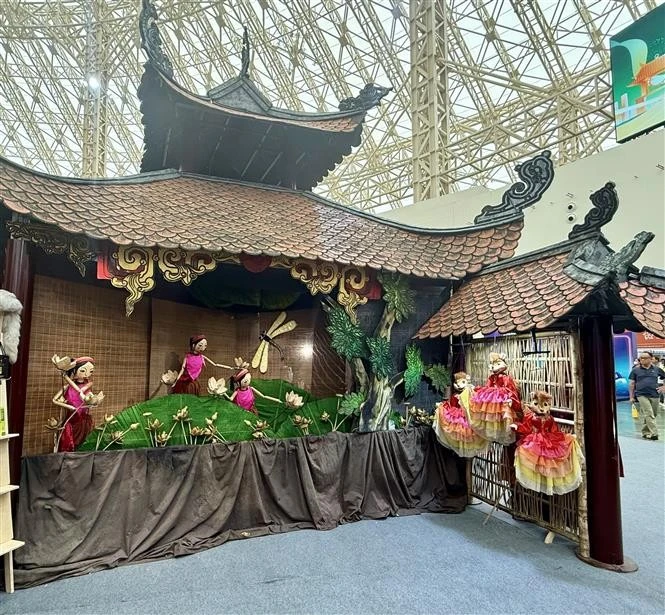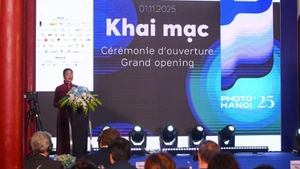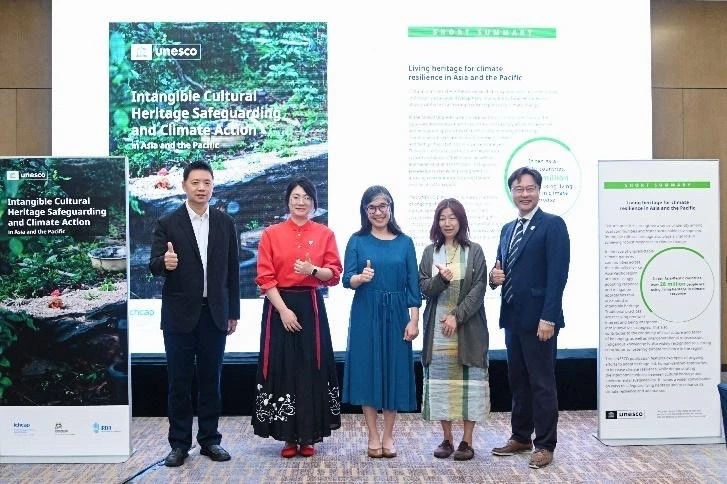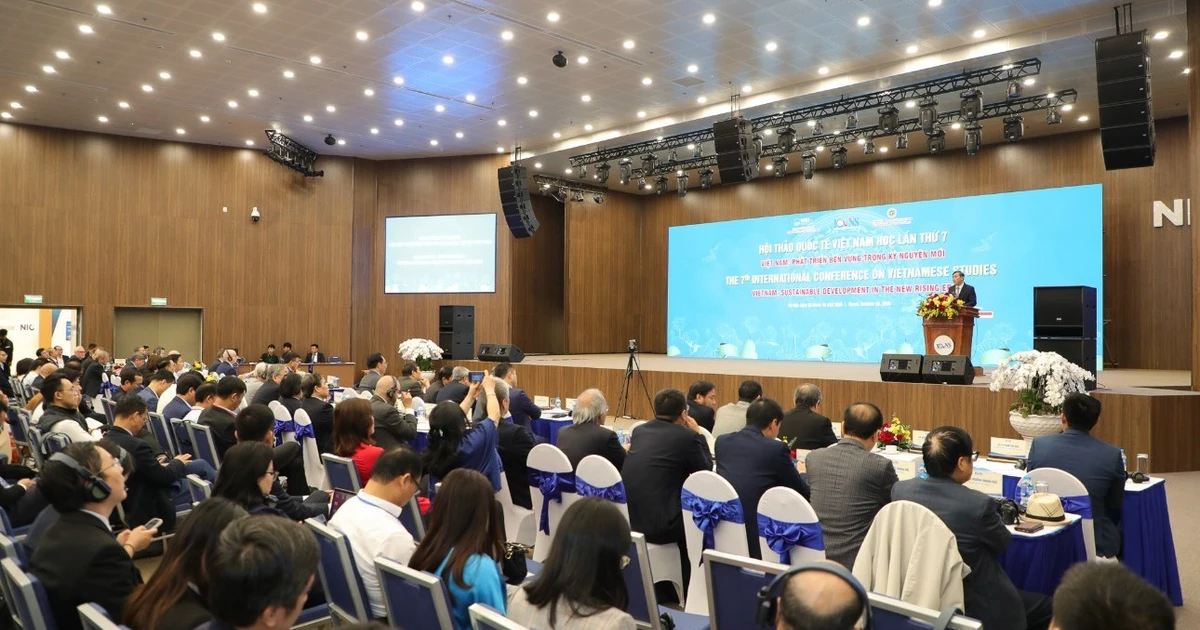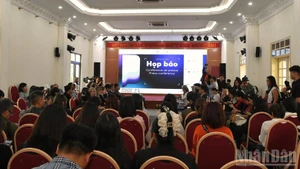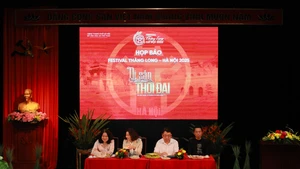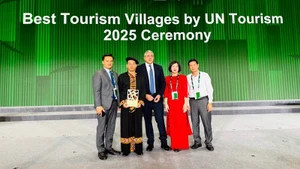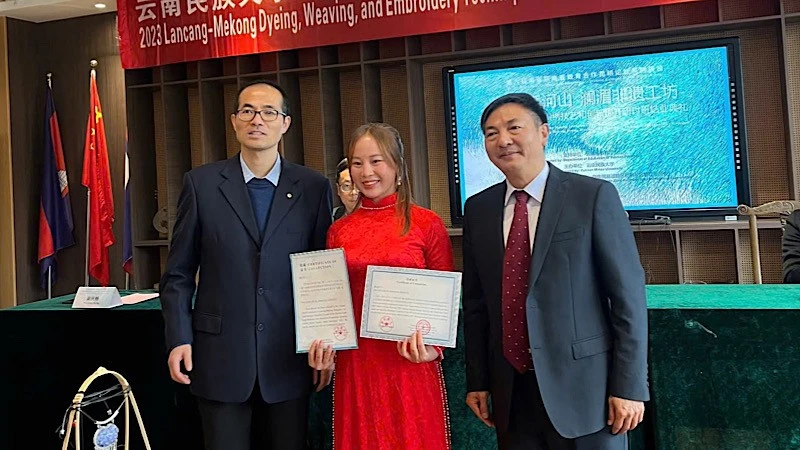Over the past 50 years, Vietnamese culture has undergone a continuous and dynamic transformation, evolving with each phase of the country’s development. Now, in the midst of a global digital revolution, the digital transformation in cultural sector is no longer just a trend, it has become an inevitable leap forward. It reflects the vision, resilience, and identity of a unified nation actively integrating with the world and affirming its cultural essence in the digital age.
Cultural digitisation is not merely about uploading information online, digitising archives, or applying technology in exhibitions. It represents a revolution in the way to approach, preserve, and spread cultural values, ensuring that precious heritage is not only safely stored but also vividly brought to life in contemporary society. It is a journey of bringing the past into the future through the language of technology, so that culture is not forgotten or confined behind glass cases, but instead walks alongside every citizen.
From traditional museums to digital cultural spaces
In the early years following reunification, museums, libraries, and cultural centres were built as “repositories of national memory.” Now, 50 years later, these institutions are taking on a new form with digitalization, interaction, connection and expansion. From once-static spaces, museums have transformed into dynamic bridges between past and present, between heritage and technology, between national memory and the path to integration.
In Ho Chi Minh City, which is always dubbed the “laboratory” for cultural innovation, the transformation from traditional museums to digital cultural spaces is unfolding vibrantly and effectively. Major institutions such as the Ho Chi Minh City Museum of History, the Ho Chi Minh Museum - Ho Chi Minh City Branch, and the Ho Chi Minh City Museum of Fine Arts have taken the lead in applying 3D technologies, virtual reality (VR), augmented reality (AR), and open data systems to redefine visitor experiences. Artifacts once dormant behind display glass are now “awakened” through technology, sound, motion graphics, lighting, and narration.
In Ha Noi, a thousand-year-old capital, this transformation is also happening with great creativity and momentum. The National Museum of History, the Vietnam Museum of Fine Arts, the Vietnamese Women’s Museum, the Hoa Lo Prison Relic, the Thang Long Imperial Citadel, and most recently, the Van Mieu – Quoc Tu Giam (Temple of Literature) relic site, have all adopted advanced technologies to bring the heritage closer to the public, particularly younger generations.
Public libraries in Ha Noi are also undergoing significant changes. The National Library of Viet Nam is at the forefront of developing a digital library portal, enabling readers both in the country and abroad to access millions of pages of documents, books, periodicals, and rare manuscripts. Collections of Han (Chinese script) -Nom (Vietnamese ideographic script) documents, French-language books, and Indochinese-era newspapers—once limited to reading rooms—are now accessible to the world. Through digitisation, the past becomes a resource for the present and an inspiration for future creativity.
From Ho Chi Minh City to Ha Noi, from local museums to national heritage sites, from traditional libraries to digital platforms, everything is moving in unison from storage to sharing, from display to dialogue, from static to dynamic, from “preserved” to “revived.”
The development of digital cultural spaces does not merely offer technological convenience or administrative efficiency, but also ignites something more fundamental: pride and connection between today’s citizens and yesterday’s heritage. When a child in a remote mountain village can explore the Thang Long Imperial Citadel through a VR headset; when a teenager in Cu Chi can visit Hoa Lo Prison through a digital model; when millions of Vietnamese overseas can "return home" through virtual museums—that is when we see the true power of digital culture: connecting the past with the present, and breathing life into heritage for the future.
Driven by creativity and technology
In the ever-evolving stream of the digital age, technology has become more than a mere tool—it is now an integral part of the living structure of cultural institutions. Yet, if confined to just “digitising information,” technology alone will fall short. What defines this era is the fusion of technology with creativity, where heritage is seen not as something immutable, but as a source of inspiration for new approaches, new narratives, and new forms of education.
For an example, a Dong Ho folk painting not only recreated in ultra-high resolution scans, but animated using artificial intelligence; a traditional Chau Van (spiritual singing) song not merely archived as an audio file, but remixed into an electronic track for young people to dance to art street festivals; or an ancient communal house not only measured with flycam technology, but rebuilt into a virtual world where students can “enter” through VR devices to explore architecture, rituals, history, and traditions.
These are no longer fantasies. They are happening every day across the country, especially in Ha Noi, Ho Chi Minh City, and other major creative hubs. In Ho Chi Minh City, the startup “Viet Nam Time Travel” has developed an app that allows users to “time travel” via smartphone, exploring Saigon through different historical periods. A high school student can stand at the Le Loi - Nguyen Hue roundabout today, put on a VR headset, and find themselves among the crowds marching toward Independence Palace on April 30, 1975. That is not just technology—it is emotion, it is history resurrected in the minds of the youth.
What sets cultural innovation apart in this technological age is its interdisciplinary and open nature. Museums no longer operate in isolation but collaborate with universities, research institutes, designers, programmers, and even local communities to create products that not only preserve values but also boost tourism, education, and the creative economy. A digital dataset on ancient architecture can be used to make films, write graphic novels, develop video games, design interiors, or build smart tourism apps. Culture becomes a vital current that nourishes cross-sector creativity—and the most unique material through which Viet Nam asserts its identity in global integration.
Notably, these projects do not require vast resources; rather, they are built on the very spirit that “every citizen is an artist, every village a cultural treasure,” as long as we know how to tell the story in the language of current time.
Digital culture does not erode identity. On the contrary, when guided by creativity and technology, culture becomes a “mirror reflecting cultural identity”—preserving the essence of national heritage while expanding the boundaries of cultural engagement. This is the path for Viet Nam to continue writing a new chapter in the journey of safeguarding and promoting heritage, and transforming culture into a true driving force for development.
